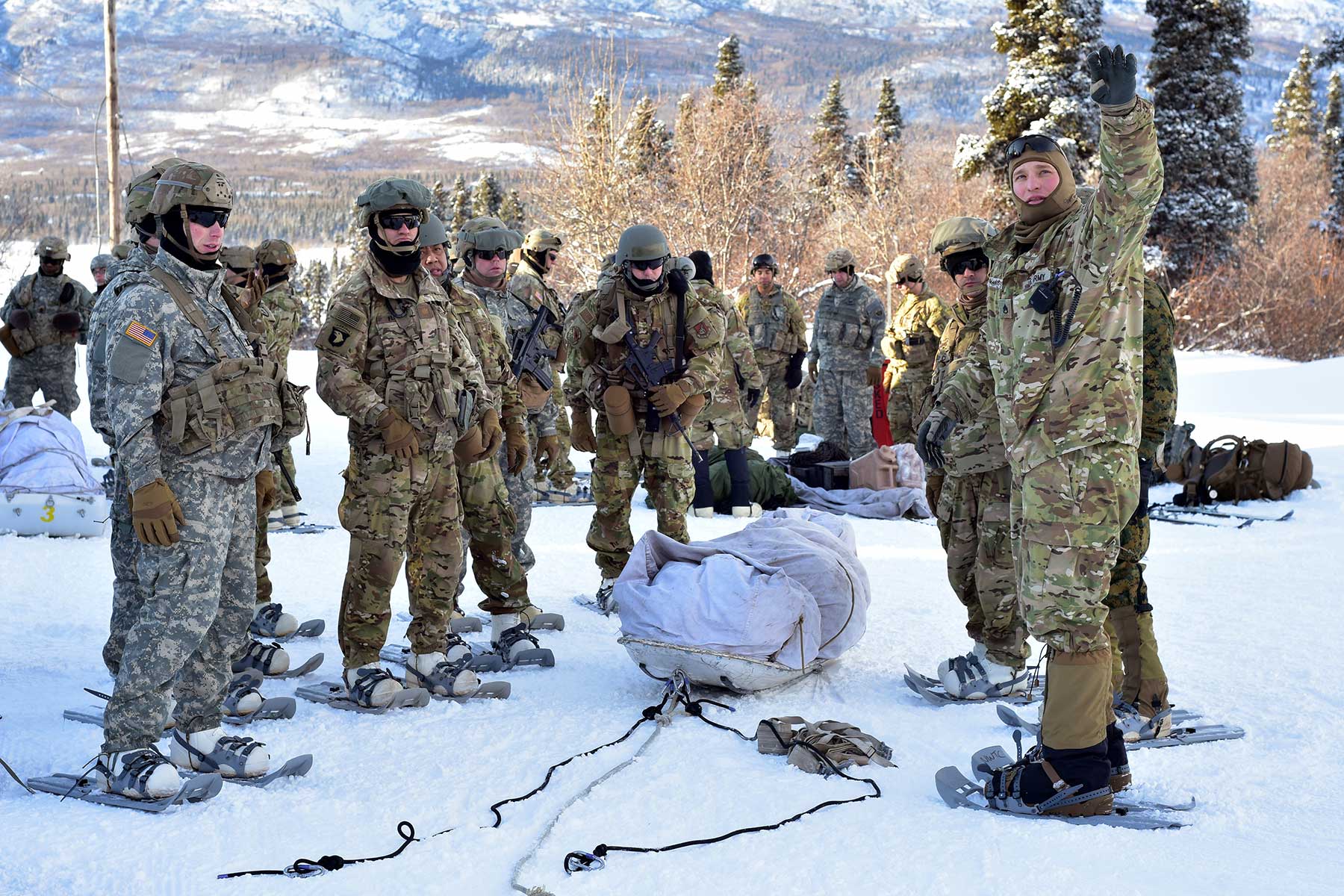This research paper will navigate through the multidisciplinary facets of growing geopolitical interests in the Arctic region which raises the integrated military and security concerns. The paper will also delve into the vulnerability of the Arctic to unprecedented climate changes and the subsequent opportunities it offers to the nations in crafting their sustainable security solutions opting for cooperation, diplomacy, and innovative strategies to promote peace, stability, and environmental resilience in this dynamic region.
The Arctic region is located above 66° 34′ north latitude, known for its frozen expanse and home to about millions of inhabitants. The region which was earlier perceived for its geographical space has now transformed into a competitive political arena. The region’s unlocked opportunities have not only provided access to untapped resources but also intensified geopolitical competition.
An enigmatic stretch of ice and water termed as Arctic, has captivated the interest of scientists, researchers, explorers and policy makers. The once inhospitable land has a complex and evolving geopolitical landscape which have raised the present-day sovereignty and security issues at the global stage. Before pre-European exploration to the Arctic region, there was growing interest amongst hunters in muskoxen, seals, caribou and waterfowl. Many such marine hunters known as Paleo-Eskimos sailed through Bering Strait, Siberia, and subsequently in an unoccupied tundra regions of Canada, Greenland and Alaska. Twelfth century witnessed a phased migration of Thules, traversing across Arctic Canada from Alaska to Greenland during the times of open sea waters, resulting in their occupation of Lancaster Sound and Baffin Bay region.
Europeans were motivated to explore the Arctic region with the hope of establishing sea routes to East Asia through the Arctic islands of North America. England’s search for northwest passage began by Martin Frobisher in 1576, with the aim to establish an English colony and gold mine in the Canadian Arctic. Subsequently, in 1587 John Davis traversed between Greenland and Baffin Island which was later termed as the Davis Strait.
European exploration started in the 16th Century, when there was a dominance of Portugal and Spain on the sea routes to Asia. The Dutch merchants wanted to navigate to East Asia through the sea routes of Cape of Good Hope and the Indian Ocean which was not only under the control of Portugal but also a long and time-consuming route. Russia’s exploration to the Arctic region began with the conquest of Siberia in the 16th century. In March 1583, the Tsar ordered the establishment of a city near the Mikhailo-Archangel monastery, situated at the mouth of the Northern Dvina River, 30 kilometers from the White Sea, which was known as Arkhangelsk in the 17th century. This seaport played a key role in development of Arctic Shipping routes for Russia. Tsar Peter I instructed Vitus Jonassen Bering to find a point where Siberia connected to America in order to determine whether Asia and North America is separated by water. As a result the Second Kamchatka Expedition led to the discovery of Alaska and the Strait separating Siberia and Alaska was termed as the Bering Strait.
The 19th century witnessed a dramatic transformation towards the ideas of imperialism and colonialism where the race was towards territorial claims and resource exploitation. In this particular era Arctic played a role of circumnavigation for powerful nations to implore shortest sea routes in order to navigate their imperialist ideology. The race to uncover the Arctic region led to many catastrophic explorations, one such was by a British explorer Sir John Franklin in the year 1845. The open sea water hypothesis in 19th century Arctic geopolitics witnessed the international collaboration between the USA, Russia and Britain in rescue missions, reflecting their shared interest in Arctic exploration.
The geopolitical dynamics of the Arctic in the 20th century have witnessed a strategic military performance to assert sovereignty and national security in the open seas. During the Cold War, Norway covertly constructed a naval facility known as Olavsvern, ingeniously carved into the mountainside just beyond the city of Tromsø, situated within the Arctic Circle, in order to fight against the Soviet Union. During World War II, the US congress passed a Lend Lease Programme to provide military and economic support to the USSR against the Nazi Germany. This led to collaborative efforts between the USSR, UK and USA in the development of the Northern Sea Route (NSR) to be used for freight logistics in the Arctic during the outbreak of the war. Even during the outbreak of the Cold war, the Soviet Navy’s Northern Fleet had its main bases on the Kola Peninsula which was within the Arctic Circle. One of the most ambitious projects of USA and Canada collaboration was the Distant Early Warning (DEW) Line, which was built to monitor the Arctic space against the Soviet bomber and InterContinental Ballistic Missile (ICBM) attack. Furthermore, the Arctic also assumed paramount significance in the realm of security, particularly for NATO. This heightened importance was primarily attributed to the strategic value of the Greenland-Iceland-United Kingdom Gap in order to obstruct Soviet submarines from gaining access to the Atlantic Ocean.
The geopolitical landscape of the 21st century Arctic is different unlike the Cold war era, where the world was divided between the two greatest powers i.e., the USA and Russia. The shift from the rivalry to collaboration can be traced from the 1987 Mikhail Gorbachev’s Murmansk speech, which stressed upon developing Arctic as a zone of peace, scientific exploration programmes with other countries such as Canada and promoting confidence building measures such as limiting the rivalry in anti-submarine weapons.
Click Here To Download The Paper


📌Analysis of Bills and Acts
📌 Summary of Reports from Government Agencies
📌 Analysis of Election Manifestos

